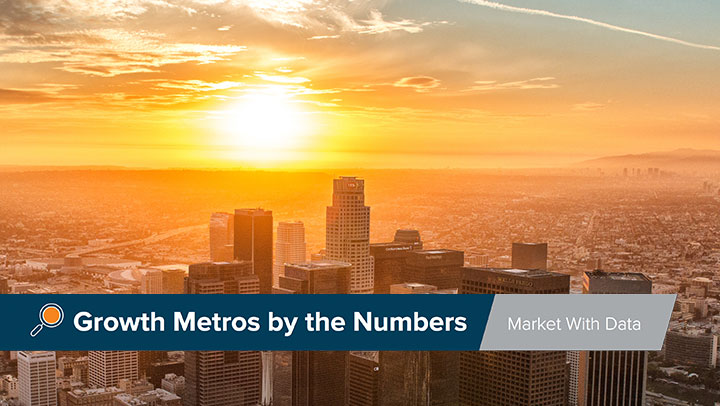
Market Data: Top Growth Metros in Multifamily Real Estate
The world of “big data” has made it tough to be a marketer. You’re already being asked to report up on KPIs like occupancy, cost-per-lead, number of form fills each week, open rate on email campaigns and more. It seems like each report is expected to be deeper and more inclusive.
The problem is your property’s metrics only tell a piece of the story. Looking at your own marketing data would be like a doctor only studying the symptoms of one sick patient, rather than comparing the local symptoms to years of research done by the medical community at large. The doctor could administer medication that may solve for some of the pain his patient is in, but might miss the larger picture and misdiagnose the actual problem.
Marketers are misdiagnosing their channels constantly. Let’s pause, take a step back and examine some of the market data that can help drive your marketing decisions.
In cities that have a large number of building permits for Multifamily real estate properties, the increased competition will change how you allocate your marketing spend. We took a deep dive into the top growth metros in the U.S. (by new multifamily permits).
Let’s look at some of the high-level data.
Millennial Growth
Seattle, Atlanta and Dallas top the charts for expected millennial growth in the next five years. Are your properties prepared for the surge? Millennials have different expectations for both their digital and in-person experiences with your property. If this is your target resident, make sure your digital presence is optimized to meet their expectations. Once that is taken care of, get your properties in front of them during their buyer journey. Typically, millennials are searching while they are on-the-go on their smartphones. They are looking for a place to live while standing in line for coffee, chatting with a friend who just moved into the new ‘hot’ neighborhood, and then diving deeper on their couch while binge-watching the newest Netflix series.
Search Competitiveness
Chicago, Denver and Los Angeles stood out for their search competitiveness score. That means that the number of advertisers competing for relative apartment search related keywords is high. Does that mean you should simply bow out of the digital advertising game? Absolutely not. Digital advertisements take up 100% of the mobile search screen. If you are not competing, you will fall behind. So, what should you do? You need a best-in-class digital advertising strategy that will get your property seen. Designing your digital advertising campaigns by focusing on search terms that convert, excluding the terms you don’t want, and optimizing the keyword structure of your campaigns can all help move your ads up on the screen.
Peak Months
All of the major metros show seasonality around the summer months. Some earlier in the summer than others (you can see specific months on each metro’s datagraph). What does this mean for you? Focus your dollars in those months. Marketing channels don’t have to take an ‘always on’ approach. They aren’t your local Waffle House. Be strategic and set-up trigger-based campaigns and seasonally relevant campaigns to ensure you are efficiently using your dollars.
Dive in further by downloading our metro-specific datagraphs that will show you specific peak months, geographic search volume, average cost-per-click, rent-to-income ratios and rent growth forecasts to help you build your marketing plans with the right data.
Atlanta
Population: 5.99 million
Expected Growth in Millennials in 5 Years: 12.3%
Chicago
Population: 9.59 million
Expected Growth in Millennials in 5 Years: 1.3%
Dallas
Population: 7.45 million
Expected Growth in Millennials in 5 Years: 12.2%
Denver
Population: 2.92 million
Expected Growth in Millennials in 5 Years: 10.4%
Houston
Population: 6.97 million
Expected Growth in Millennials in 5 Years: 10.6%
Los Angeles
Population: 10.32 million
Expected Growth in Millennials in 5 Years: 3.6%
San Diego
Population: 3.38 million
Expected Growth in Millennials in 5 Years: 5.5%
Seattle
Population: 2.99 million
Expected Growth in Millennials in 5 Years: 13.9%
Get News, Articles & Updates in Your Inbox
Thank You for Your Interest
We will be in contact soon and look forward to learning more about you and your company. Based on your marketing challenges, we’ll discuss increasing visibility into your analytics and how to generate more and better leads so you can achieve your marketing goals.
In the meantime, we invite you to check out our checklist on website accessibility. Use this checklist to start assessing the baseline accessibility of your website.
Enjoy! We’ll be in touch very soon.
